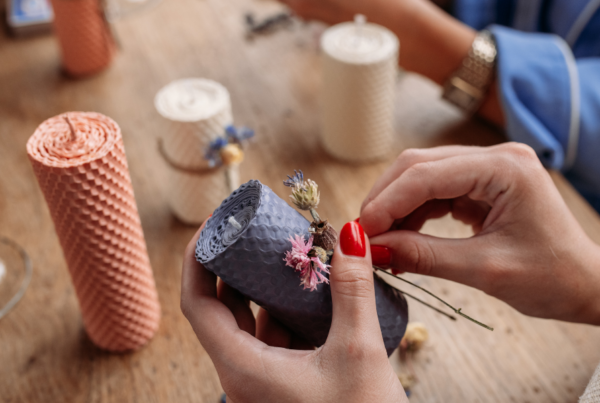Despite the abundance that we experience today, there is still so much wisdom to be gained from the frugal living tips passed down from those who lived through the Great Depression. During those trying times, people learned how to not just survive but thrive on very little. In this article, we will delve into some of the best frugal living tips from that era and see how they can still be relevant in our lives today. By incorporating these lessons and practices into our daily lives, we can learn to save money, reduce waste, and lead a more sustainable lifestyle.
The Frugal Living Practices of The Great Depression
During the Great Depression, people had to learn how to survive with what they already had. They could not afford to waste anything, from food to clothing to household items. By applying these frugal living practices, we can save money, reduce waste, and live a more sustainable lifestyle. Here are some frugal living practices from that era that we can apply to our lives today:
Reusing and Repurposing – Using items for many purposes was an integral part of surviving during The Depression, from turning old clothing into quilts or rugs to reusing jars for canning to turning old sheets into curtains. Finding creative ways to repurpose items in our own homes can keep us from having to buy new stuff. We will give you some more great ideas and ways to do this in the next section.
Gardening – Growing a garden was essential during the Great Depression. It allowed families to grow their own produce and gave them access to food when there wasn’t enough around. Homesteading and gardening have become very popular in recent years as well. Check out How To Save Money on Food by Growing Your Own for some tips on how to do it. If you don’t have the space for an outdoor garden, Food You Can Grow in Your Apartment will give you some awesome ideas too.
Cooking from Scratch – Processed foods were not common during the Great Depression, so families had to cook meals from scratch using basic ingredients. We can continue this practice by cooking more meals at home, using fresh ingredients, and avoiding processed foods.
Saving Energy – For the families who still had electricity during that era, they could not afford to waste it. Using natural light during the day and candles at night were standard. We can follow this example by turning off lights when leaving a room, dressing warmer (or cooler), and sealing drafts around windows and doors.
Making Do with Less – One of the biggest lessons from the Great Depression was learning to make do with less. Families would make their own toys, repair clothing instead of buying new ones, and find ways to entertain themselves without spending money. We can apply this by finding ways to live more minimally and only purchasing what we truly need.
Resourcefulness: Using What You Have Instead of Buying New
During the Great Depression, people had to be extremely resourceful to make ends meet. They often had to rely on what they already had instead of buying new. Repurposing household items is an excellent way to be resourceful. Here are some tips to help you be more resourceful and use what you have instead of buying new:
- Glass Jars: Clean and repurpose glass jars as storage containers for pantry items like grains, nuts, and spices. They can also be used as vases, candle holders, or even DIY terrariums.
- T-Shirts: Transform old t-shirts into reusable shopping bags by cutting off the sleeves and sewing the bottom closed. This helps reduce plastic bag waste and gives your t-shirts a new purpose. You can also turn them into pillowcases.
- Egg Cartons: Repurpose egg cartons as seed starters for gardening. Fill each compartment with soil and plant seeds. Once the seedlings are ready, you can transfer them to larger pots or directly into the garden.
- Plastic Bottles: Cut off the top portion of plastic bottles to create handy storage solutions. Use them as small organizers for office supplies like pens, pencils, and paper clips. You can also repurpose larger bottles as watering cans for your indoor or outdoor plants by poking small holes in the cap and using the bottle’s spout to control the water flow.
Making Do: Making and Repairing Items
One of the key principles of frugal living is to make things last as long as possible. The Great Depression taught people to make and repair stuff rather than continuously buying new ones. This philosophy can be applied today, and it is a sustainable way to save money and reduce waste. Here are some tips for making and repairing items:
Learn basic repair skills – Knowing how to fix simple items like clothing, kitchen appliances, or furniture can save you a lot of money over time. There are plenty of resources available online to help you learn basic repair skills.
Refinish furniture – Instead of buying new furniture, consider refinishing old pieces. It’s a fun DIY project that will save you money and give your home a unique look. If you find that you love doing it, you can even sell the furniture that you redo!
Make your own cleaning products – During the Great Depression, nobody had money to buy Windex or Pine-Sol, so they made their own. Homemade cleaning products can be just as effective as store-bought options and cost a fraction of the price. Basic ingredients like vinegar, baking soda, and lemon juice can be used to clean almost anything. Check out Make Your Own Cheap And Healthy Cleaning Products for how to do it.
Preserve food – Those that lived through The Depression Food didn’t waste even a scrap of food. And they learned how to preserve it to make it last. Preservation techniques like canning and pickling can save you money by allowing you to stock up on produce when it’s in season and cheaper.
Repair electronics – Electronic devices are expensive, and while they were very common during the Great Depression, repairing them rather than replacing them can help you live frugally. Before you throw out a broken electronic device, try to repair it first. There are plenty of online tutorials and resources available to help you diagnose and fix common issues.
Embracing Frugality in Your Everyday Life
Frugal living is a practical, sustainable way to save money and reduce waste. By adopting some of the principles and tips from the Great Depression era, we can learn to make the most of what we have and become more self-sufficient. Whether it’s repairing and repurposing items, making DIY cleaning products, or learning basic repair skills, embracing frugality can have a positive impact on our finances and the environment.
Remember that the key to successful frugal living is to focus on what matters most to us and make deliberate, informed choices about our spending like they had to do during The Depression. Whether we are trying to save money, reduce our environmental impact, or simply live a more intentional life, embracing frugality can help us achieve our goals and live a more fulfilling, sustainable life.











